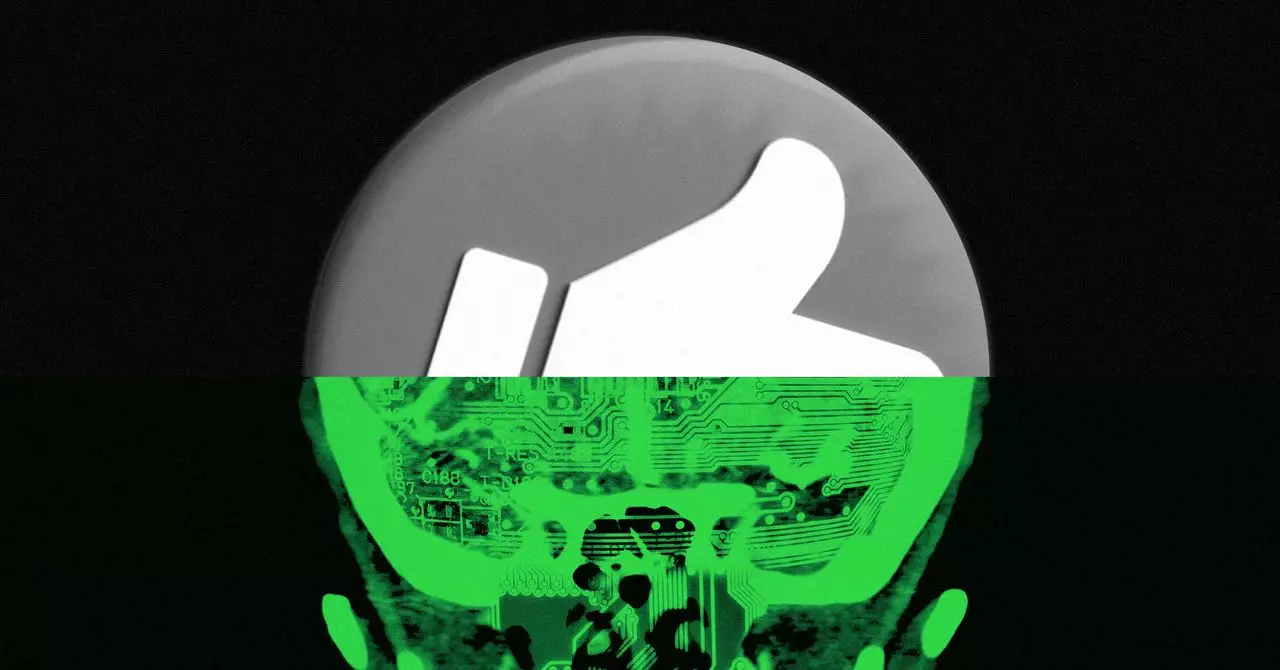The like button, a seemingly simple mechanism integrated into our online experience, may be on the brink of a transformational renaissance in the age of artificial intelligence (AI). As AI technologies evolve, they not only revolutionize the way we consume content but also fundamentally alter how our preferences and interactions are captured. Max Levchin, co-founder of PayPal and CEO of Affirm, speculates on the potential of like data to empower AI systems, enabling them to reflect human decision-making more accurately. This potential raises critical questions about the future relevance of the like button in a world increasingly dominated by sophisticated AI models.
The Role of User Preferences in AI Development
Levchin’s insights highlight a crucial challenge in machine learning: the discordance between human judgment and AI-driven conclusions. AI, fueled by reinforcement learning, has the capacity to optimize its performance based on clear reward functions, but often diverges from human reasoning. To realign AI outputs with human sensibilities, developers have turned to Reinforcement Learning from Human Feedback (RLHF), effectively incorporating human preferences into AI training. However, sourcing quality feedback data remains a daunting and costly endeavor.
In this landscape, Levchin sees great value in the like button as a goldmine of human preference data. The vast repository of likes on platforms like Facebook could serve as a crucial resource for training intelligent systems. Accessing this data could eliminate the financial burden associated with RLHF by providing a massive volume of user-generated feedback that approximates genuine human choices. The implication is that user interactions, distilled through the like button, could become a primary input for the development of AI systems aimed at understanding and replicating human decision-making processes.
AI Influencing Human Preferences: A New Paradigm
Interestingly, as Levchin contemplates the potential of the like button, a paradox emerges: AI is not merely a passive recipient of like data; it actively shapes the parameters of user preferences. Social media platforms increasingly employ AI algorithms not only to analyze likes but also to predict them, raising the question of whether the like button might soon become obsolete. As these algorithms evolve, they can tailor content recommendations with remarkable precision, minimizing the need for explicit user feedback altogether.
This shift challenges our understanding of user engagement. If AI can consistently deliver precisely curated content that aligns with users’ preferences, will the like button still hold significance? The implications of this shift are immense. As we rely on AI to dictate our preferences, we might find ourselves entrusting our tastes to algorithms that may lack the nuanced understanding possessed by human peers. Therefore, while the like button has historically been a simple means of feedback, it could soon be rendered redundant by AI’s ability to intuitively master our preferences without direct affirmation.
The Enduring Value of the Like Button
Despite the ever-advancing capabilities of AI, it is essential to consider the enduring value of the like button. YouTube co-founder Steve Chen articulates the idea that situational and temporal changes in consumer preferences may create a scenario where explicit feedback remains vital. Daily life events, preferences shifting in response to current circumstances, and the emotional tone of the moment all play roles in our content choices. While AI may excel at predicting our viewing habits based on historical data, it may falter in adapting rapidly to these shifts.
Moreover, the like button serves a critical function beyond mere user feedback. It acts as a vital connective tissue between audiences, content creators, and advertisers. In an ecosystem where advertisers seek assurance of engagement levels, the like button provides immediate, quantifiable interaction metrics. This trifecta—viewers, creators, advertisers—relies on the simplicity of the like to communicate appreciation and engagement succinctly. In this sense, the like button isn’t just about personal preference; it is a central element of the digital economy, linking various stakeholders and enhancing the value proposition for advertisers seeking targeted audiences.
The Evolution of Feedback Mechanisms
As we look ahead, the landscape of social media and digital engagement will continue to be reshaped by AI advancements. The potential for AI to analyze and predict user preferences could give rise to entirely new methods of interaction, redefining what feedback looks like. While the like button may be perceived as a primitive tool in an age of AI sophistication, its remnants will likely persist in one form or another.
Ultimately, the dialogue surrounding the future of the like button emphasizes not just the evolution of technology but also the fundamental nature of human interaction. As AI technologies gain the ability to make inferences about our preferences, we must remain vigilant about the implications for authenticity and genuine human connections in the digital space. In navigating this terrain, the challenge lies in ensuring that technology enriches rather than diminishes our human experience. The like button, in all its simplicity, may evolve, but its importance as a barometer for human emotion and interaction will likely endure.

